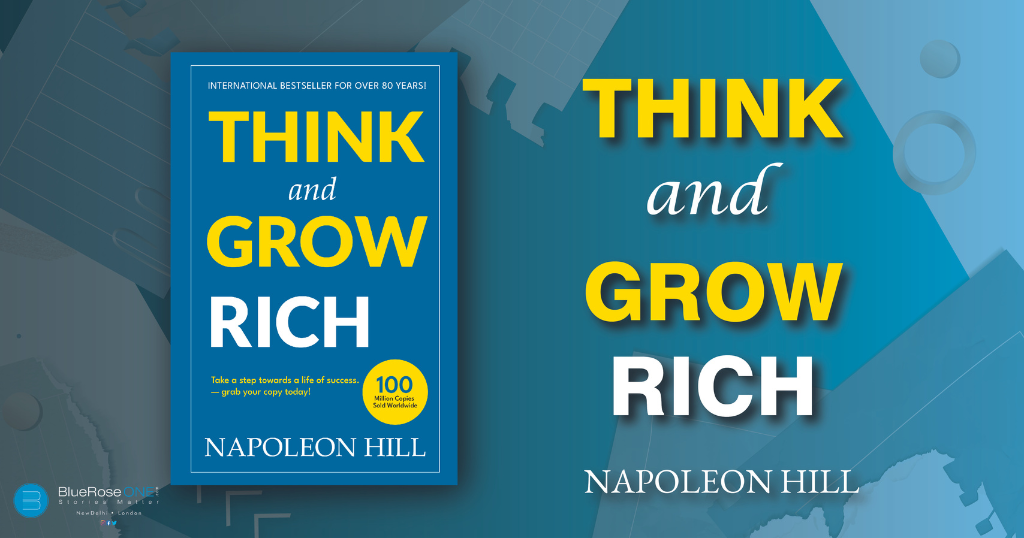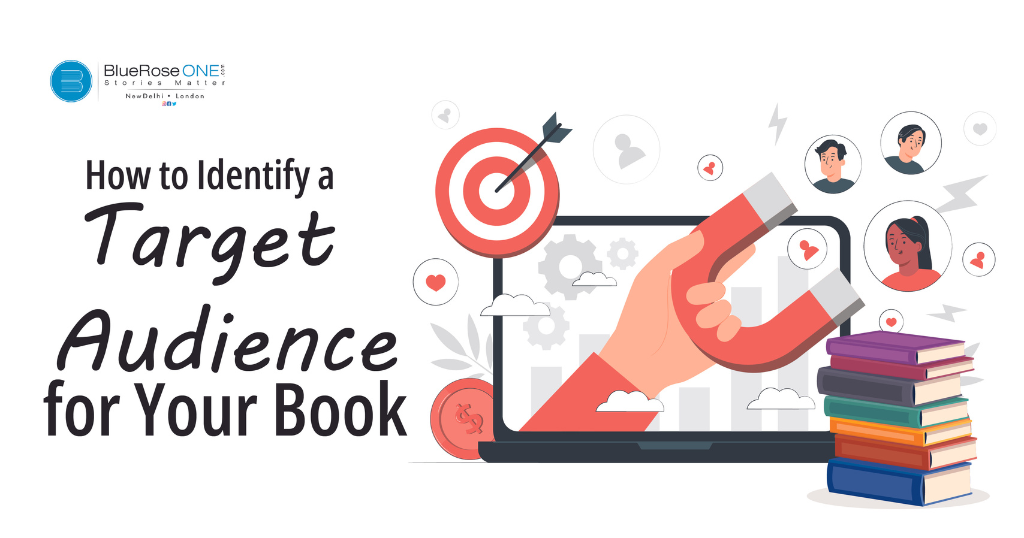
How to Identify a Target Audience for Your Book in Simple Ways
Writing a book is an exhilarating journey, but its success often hinges on understanding and connecting with your audience. Identifying a target audience is a fundamental step that can shape your writing, marketing strategies, and overall success as an author. In this comprehensive guide, we’ll explore simple yet effective ways to pinpoint your target audience and tailor your book to meet their needs. Define your book’s genre and category. Create reader personas. Utilise social media insights. Engage with writing communities. Conduct surveys and polls. Analyse Competing Books. Consider Demographic Factors. Beta Readers and Early Reviews. Evaluate bookstore shelves. Iterate and refine. 1. Define your book’s genre and category. Defining your book’s genre and category is akin to setting the stage for a performance. It provides the essential backdrop against which your narrative unfolds. Genres, such as mystery, romance, self-help, or science fiction, act as beacons, attracting specific audience archetypes. For instance, consider a science fiction novel. Readers drawn to this genre likely appreciate speculative fiction, futuristic settings, and explorations of scientific themes. Understanding your book’s genre is the cornerstone of identifying your target audience. It guides you in crafting a story that aligns with the expectations and preferences of readers within that literary landscape. Example: Imagine a novel that seamlessly blends elements of mystery and romance. By defining it within the romantic mystery genre, you immediately appeal to readers who relish both suspenseful plots and romantic narratives. This clarity attracts an audience expecting a unique fusion of these two genres. 2. Create reader personas. Developing reader personas is akin to sculpting characters for your book; only these are representative of your target audience. These fictional personas embody different segments of your readership, encapsulating factors like age, gender, interests, and motivations. Let’s consider “Adventure Seeker Alice,” a 30-year-old professional with a penchant for thrillers, travel, and outdoor activities. Creating personas like Alice helps you visualise and understand your ideal readers. This exercise transforms your audience from an abstract concept into relatable individuals with specific preferences, enabling you to tailor your writing to resonate authentically with them. Example: If your book features a protagonist who embarks on thrilling adventures and explores the great outdoors, it directly aligns with Adventure Seeker Alice’s preferences. Understanding her motivations and interests allows you to infuse elements into your narrative that resonate with readers like her. 3. Utilise social media insights. In the digital age, social media serves as a dynamic window into the lives and preferences of potential readers. Platforms like Facebook, Instagram, and Twitter provide a wealth of analytics, offering insights into demographics, interests, and behaviors. Dive into these metrics to identify trends and understand who engages with content akin to your book. For instance, if your genre finds resonance among users aged 25–35 following specific hashtags or pages, you gain valuable insights into your potential audience. Example: Suppose your book explores themes that align with popular hashtags among young adults interested in adventure and self-discovery. By leveraging these insights, you can tailor your marketing strategies to reach this demographic effectively. You may also like: Strategies for Effective Book Recommendations in Publishing 4. Engage with writing communities. Online writing communities act as bustling marketplaces of ideas and preferences. Platforms like Goodreads, Wattpad, or writing forums serve as virtual town squares where readers congregate. Actively participate in discussions, immerse yourself in conversations, and observe the preferences of readers who enjoy content similar to yours. By engaging with these communities, you not only learn about your audience but also create anticipation for your book. Example: If you’re writing a fantasy novel, participating in forums discussing popular fantasy series allows you to gauge the expectations and preferences of fantasy enthusiasts. This firsthand interaction helps you tailor your book to meet the specific tastes of this community. 5. Conduct surveys and polls. Direct engagement with your audience through surveys and polls is akin to having a conversation with your readers. Utilise platforms like SurveyMonkey or social media polls to pose questions about reading habits, genre preferences, and the elements that resonate with them. For example, inquire about their favourite books, preferred formats, or the themes that capture their interest. The insights gleaned from these responses serve as a compass, guiding your writing decisions to align more closely with your audience’s expectations. Example: Suppose you’re working on a historical fiction novel. Conducting a survey and asking readers whether they prefer detailed historical accuracy or a more fantastical interpretation of historical events can help you tailor your narrative to suit the majority’s expectations. 6. Analyse Competing Books. Learning from the success of others is a prudent strategy. Examine books within your genre that have achieved acclaim. Dive into reader reviews, comments, and discussions on platforms like Amazon or Goodreads. Identifying commonalities among readers who enjoyed those books provides valuable insights into your potential audience. Example: If you’re writing a mystery novel, analysing popular mysteries on the market can reveal recurring themes or plot elements that resonate with readers. If a particular type of detective character or a specific narrative structure receives praise, incorporating similar elements into your work can appeal to your audience. 7. Consider Demographic Factors. Demographics play a pivotal role in shaping your audience. Reflect on factors such as age, gender, location, and occupation, considering how they might influence the reception of your book. If your narrative addresses the challenges faced by young professionals in urban settings, your target audience likely comprises individuals aged 22–35 working in metropolitan areas. Example: For a self-help book on navigating career challenges, understanding the demographics of your audience is crucial. Tailoring your advice to resonate with the experiences of young professionals can significantly enhance the relevance of your book. You may also like: Guide to Self-Publishing on Amazon Kindle Direct Publishing 8. Beta Readers and Early Reviews Engaging beta readers or offering early copies of your book provides a real-world litmus test. The feedback from these early readers serves as a preview of how your book might be received by a broader audience. Pay attention to the demographics and preferences of…
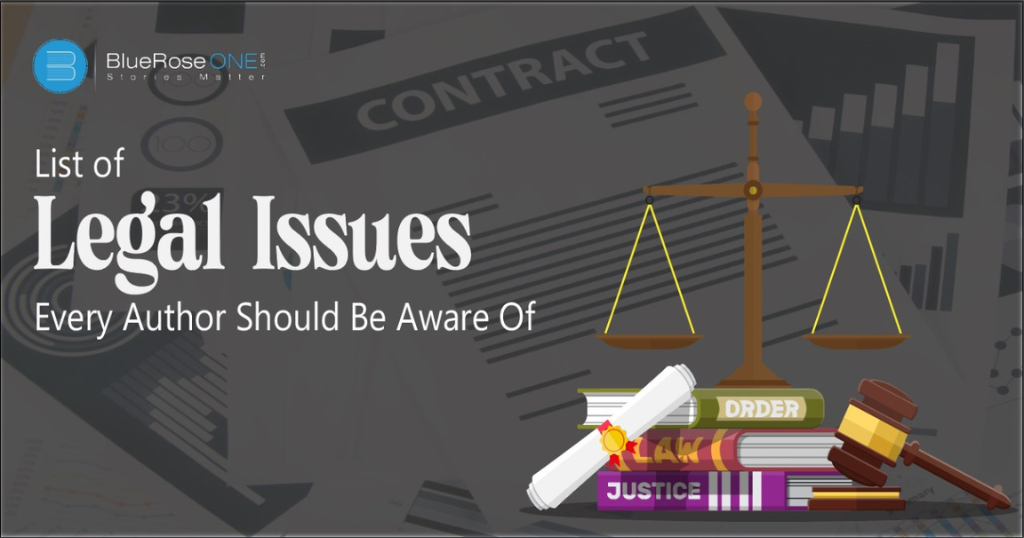
10 Legal Issues to be aware of Before Publishing a Book
Writing a book is a labour of love, dedication, and creativity. However, amid the excitement of bringing your words to the world, it’s crucial to navigate the complex terrain of legal considerations. Authors must be aware of various legal issues to protect their work and themselves and ensure a smooth publishing journey. Read: How much should my book cost? 7 Tips for pricing your book In this comprehensive guide, we’ll explore the key legal issues every author should be aware of before publishing a book. Copyright Law: Safeguarding Your Intellectual Property Contracts and Agreements: The Foundation of Legal Relationships Libel and Defamation: Navigating the Thin Line Privacy Issues: Respecting Boundaries Trademark Considerations: Avoiding Branding Pitfalls Plagiarism: Steer Clear of Unwanted Controversy Contract Termination: Knowing Your Exit Options Censorship and First Amendment Rights: Balancing Freedom of Expression Collaboration Agreements: Navigating Co-Authorship Challenges Electronic Publishing and Digital Rights: Navigating the Digital Landscape Copyright Law: Safeguarding Your Intellectual Property Copyright is a cornerstone for authors, offering protection for their creative works. It grants exclusive rights to the creator for a limited duration, ensuring they can control the use of their intellectual property. Understanding copyright is pivotal for authors. Copyright protects various forms of expression, including literary works like books, music, and art. It provides the exclusive right to reproduce, distribute, perform, and display the work. As an author, this means others cannot use your work without permission. Copyright lasts for the creator’s life plus a certain number of years, typically 70. Authors should be aware of fair use, allowing limited use of copyrighted material without permission for purposes like criticism, commentary, news reporting, teaching, scholarship, or research. Public domain works are not protected by copyright and can be freely used by anyone. For instance, if an author writes a novel, copyright ensures that others cannot publish or reproduce the exact text without permission. Fair use might come into play if a reviewer quotes a small portion for a critique. Understanding these aspects empowers authors to protect and share their work effectively. You may also like: Unlocking Success: How to Sell Books Online Effectively Contracts and Agreements: The Foundation of Legal Relationships Contracts are the bedrock of legal relationships in the publishing world. Authors must thoroughly comprehend and negotiate the terms before entering into any agreement. Contracts define the rights and obligations of all parties involved. Key components of a publishing contract include royalty rates, specifying the percentage of sales the author receives. The contract outlines the rights granted, determining whether the publisher has exclusive rights and the duration of these rights. Termination clauses detail the conditions under which either party can end the contract. Consider an author signing a publishing contract. The terms should specify the royalties, the scope of rights granted (e.g., print, digital), and any obligations like deadlines for delivering manuscripts. A well-negotiated contract ensures a fair and transparent relationship between the author and publisher. You may also like: 150 Useful Tone Words to Describe Tone | Explanation with Examples Libel and Defamation: Navigating the Thin Line Authors must tread carefully when discussing real individuals or entities in their work. Libel and defamation laws exist to protect individuals from false statements that harm their reputation. Authors should ensure that statements made are truthful or clearly presented as opinions. For example, if an author writes a memoir discussing experiences with public figures, stating verifiable facts is crucial to avoiding defamation claims. Presenting opinions based on disclosed facts adds a layer of protection. Understanding these legal nuances helps authors share their stories responsibly. In essence, by comprehending copyright law, mastering contract intricacies, and navigating the delicate terrain of libel and defamation, authors can safeguard their creative endeavours, foster positive collaborations, and share their narratives with legal confidence. You may also like: Top 10 Best Biographies of All Time Privacy Issues: Respecting Boundaries Respecting privacy is a fundamental ethical and legal consideration for authors, particularly when delving into non-fiction or personal narratives. Invasion of privacy claims can arise if an author reveals private, intimate, or embarrassing facts about an individual without their explicit consent. For instance, if an author is penning a memoir and includes sensitive details about a real person’s health or personal life, it’s crucial to obtain consent. Without it, the individual may have legal grounds to claim an invasion of privacy. Exceptions exist, such as when the information is a matter of public interest or already publicly disclosed. Understanding these nuances is vital for authors to strike a balance between storytelling and respecting the rights and privacy of the people involved. Authors can avoid legal complications by seeking permission or carefully navigating the exceptions when writing about real individuals. Trademark Considerations: Avoiding Branding Pitfalls Authors must navigate the landscape of trademarks to avoid legal entanglements. Trademarks include elements like names, logos, and slogans that identify and distinguish products or services. Using trademarks without proper authorization can lead to legal challenges. For instance, if an author titles their book using a phrase that’s a registered trademark for a well-known brand, it could result in trademark infringement. Researching existing trademarks and ensuring that the chosen title, cover design, or any other elements don’t encroach upon established trademarks is crucial. By respecting trademark rights, authors protect their work from legal disputes and maintain a positive reputation. Creativity can still thrive within the bounds of trademark law, as long as authors are vigilant and considerate of existing intellectual property. Plagiarism: Steer Clear of Unwanted Controversy Plagiarism is a grave offence in the literary world, both ethically and legally. It involves presenting someone else’s work or ideas as your own without proper attribution. Authors must ensure that their work is entirely original and that any borrowed content is appropriately credited. Utilising various available tools, authors can conduct thorough plagiarism checks before publication. These tools compare the author’s work against a vast database of existing content, highlighting potential matches. Proper attribution, citing sources, and obtaining permissions for any substantial excerpts are essential steps to avoid plagiarism-related controversies. For instance, if an author includes a passage from a public…
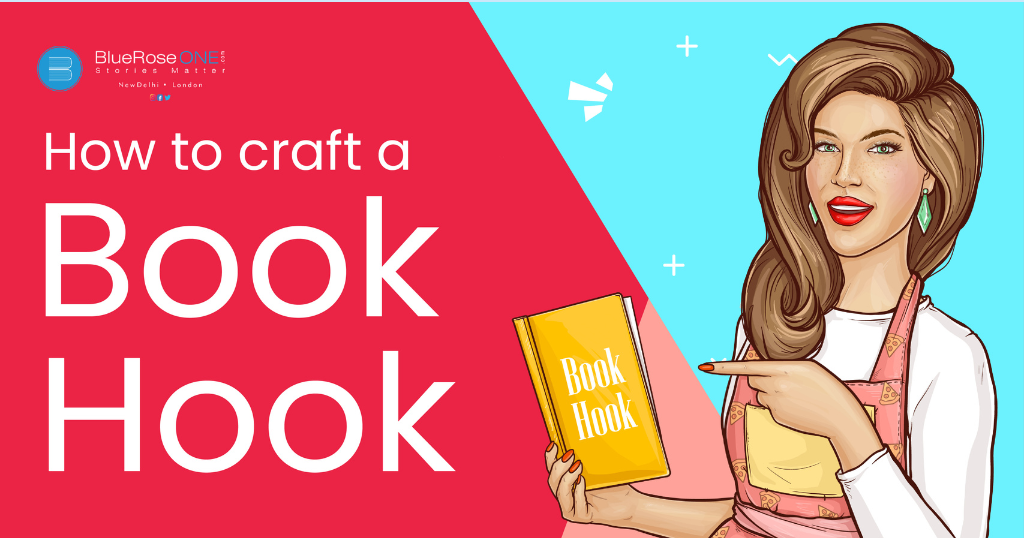
Learn How To Craft a Great Book Hook – Guide for Writers
In the vast landscape of literature, where countless books compete for attention, a compelling book hook is the secret weapon that can make your work stand out. A book hook is essentially a concise and captivating statement that grabs a reader’s attention, leaving them eager to delve into the pages of your book. Read: Get along with us on how to improve writing skills by doing these simple things. Crafting an effective book hook involves a delicate blend of art and strategy. In this comprehensive guide, we will unravel the intricacies of creating a book hook that captivates, intrigues, and leaves an indelible mark on your potential readers. Understanding the Essence of a Book Hook: At its core, a book hook is a literary tool with a profound marketing purpose—it serves as the beacon that draws readers into the world of your book. Think of it as the opening act that entices the audience, creating anticipation for the narrative spectacle that follows. The book hook encapsulates the soul of your story, offering readers a glimpse into its emotional landscape, thematic richness, and the promise of an unforgettable journey. In essence, it’s the literary equivalent of a trailer, providing a tantalising preview that beckons readers to explore further. Crafting a compelling book hook involves distilling the essence of your narrative into a succinct, magnetic force, leaving readers eager to unravel the mysteries within. Identifying Your Unique Selling Proposition (USP): Before embarking on the journey of crafting a compelling book hook, authors must engage in a crucial exercise—identifying the Unique Selling Proposition (USP) of their book. The USP is the secret sauce that sets your story apart from the vast literary landscape. What makes your narrative distinctive, unforgettable, or particularly intriguing? It could be a unique plot twist, an unconventional protagonist, or the exploration of a rarely-delved-in theme. Understanding your book’s USP is akin to uncovering its literary DNA, providing the foundational elements that will resonate with your target audience. A book hook anchored in the USP becomes a beacon, signalling to readers that your story offers something fresh, captivating, and unparalleled. It’s the key to unlocking the curiosity of potential readers and inviting them into a narrative world that promises a truly distinctive reading experience. Elements of an Effective Book Hook: Clarity and Conciseness: A successful book hook is a masterclass in clarity and conciseness. In a world inundated with information, brevity becomes a virtue. The challenge lies in distilling the essence of your story into a few impactful words. Avoid the temptation to delve into unnecessary details. Instead, focus on the core elements that make your book special. A clear and concise hook acts as a literary compass, guiding readers towards the heart of your narrative without unnecessary detours. Emotional Resonance: Infusing emotion into your book hook elevates it from a mere introduction to a resonant connection. Readers are drawn to narratives that evoke universal emotions—love, fear, curiosity, and triumph. A hook that taps into these emotional wells becomes a bridge between the author’s words and the reader’s heart. This resonance transforms a casual encounter with your book into a meaningful, memorable experience, creating a lasting impression that extends beyond the initial engagement. Intriguing Questions or Statements: An effective book hook operates as a literary hook, drawing readers in with intriguing questions or bold statements. Pose queries that linger in the reader’s mind, creating a sense of curiosity and anticipation. Craft statements that make readers yearn for answers, prompting them to embark on the journey your book promises. This technique not only engages the reader intellectually but also stirs the innate human desire for discovery, ensuring that your book remains at the forefront of their thoughts. Relevance to the Target Audience: Tailoring your book hook to resonate with the specific desires and interests of your target audience is paramount. Understanding the nuances of your readership allows you to craft a hook that speaks directly to them. Reflect their preferences in the choice of language, themes, or scenarios presented in the hook. When readers perceive a personal connection, they are more likely to view your book as a mirror reflecting their own literary cravings, increasing the likelihood of engagement. Showcasing Conflict or Tension: A compelling book hook introduces an element of conflict or tension, hinting at the challenges or obstacles your characters face. This creates a narrative tension that serves as a magnet for readers. A well-crafted hook that artfully suggests the stakes involved sparks anticipation, compelling readers to seek resolution within the pages of your book. By showcasing conflict, you invite readers into a world where the unfolding drama promises both struggle and triumph, captivating their imagination and motivating them to explore further. You may also like: 7 Top Rated Self-Help Books of all time in 2024 Crafting Your Book Hook Step by Step: Summarising Your Story: Summarising your story is the foundational step in creating a compelling book hook. This involves distilling the essence of your narrative into a concise, impactful statement. This summary should clearly articulate the central theme, conflict, or unique aspect that defines your book. It serves as the core message you want potential readers to grasp—a teaser that sparks curiosity. A well-crafted summary provides a roadmap for the subsequent elements of your book hook, offering a glimpse into the soul of your story. Identify Key Emotions: Understanding the emotional landscape of your story is crucial for connecting with readers. Emotions are the catalysts that draw readers into a narrative, and identifying the primary emotions your story evokes helps shape the tone of your book hook. Whether it’s joy, suspense, heartbreak, or a myriad of feelings, these emotions become the bridge between your narrative and the reader’s experience. Pinpointing these emotional cues allows you to infuse the hook with the right sentiment, creating a resonant connection that encourages readers to delve deeper into your book. Brainstorm Intriguing Elements: The brainstorming phase is about uncovering the gems that make your story stand out. What elements make it unforgettable?…
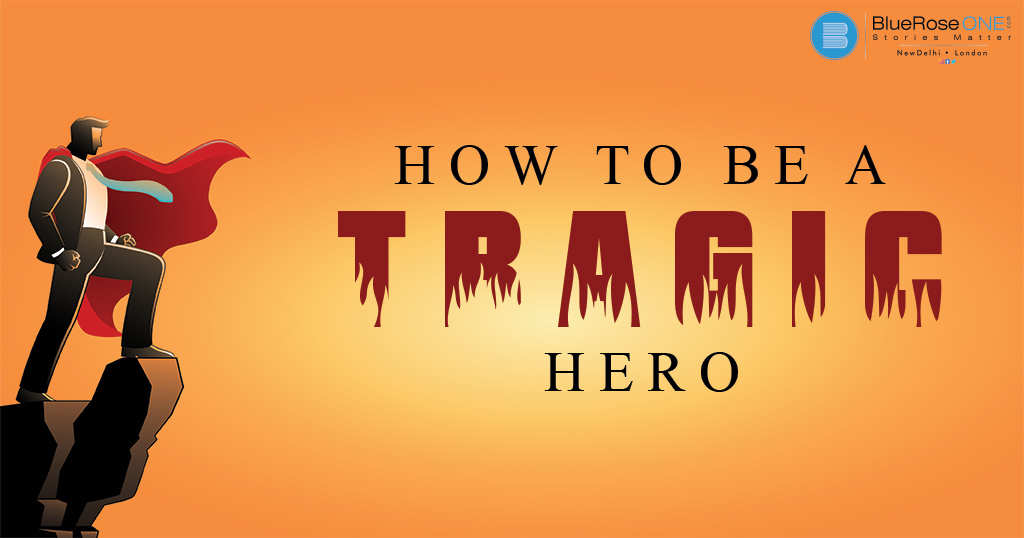
How to be a TRAGIC HERO
The concept of the tragic hero has been a fundamental element in literature, captivating audiences with its exploration of human flaws and the consequences of unchecked ambition or hubris. From ancient Greek dramas to modern literature, the tragic hero remains a compelling archetype. In this blog, we will delve into the definition, evolution, and common traits of a tragic hero, supported by illuminating examples from both classic and contemporary works. Defining the Tragic Hero: A tragic hero is a central figure in a literary work, often a protagonist, whose journey ends in tragedy due to a combination of personal traits and external circumstances. This archetype is deeply rooted in Aristotle’s “Poetics,” where he outlined key characteristics that define a tragic hero. The first element is the hero’s nobility, suggesting that the character holds a high social status or possesses admirable qualities. This nobility makes the hero’s fall more impactful and relatable to the audience. The tragic flaw, known as hamartia, is the second crucial component. It represents a fundamental mistake or character defect in the hero that contributes to their downfall. This flaw could be hubris, excessive pride, or a lack of self-awareness. The hero’s actions, guided by this flaw, set in motion a series of events leading to their tragic end. Read: What are Figurative Language Examples: Everything to Know about Figurative Language The third element is anagnorisis, which refers to the hero’s realisation of their mistakes. This self-awareness often comes too late and serves as a moment of profound insight, heightening the tragic impact of their fate. Aristotle believed that the experience of witnessing a tragic hero’s downfall evokes catharsis, a purging of emotions, and a sense of emotional release for the audience. This cathartic effect is a crucial aspect of the tragic genre, providing a transformative experience for the spectators. Evolution of the Tragic Hero: The concept of the tragic hero originated in ancient Greek tragedies, where characters like Oedipus in Sophocles’ plays embodied the archetype. These early tragic heroes adhered to Aristotle’s principles of nobility, hamartia, and anagnorisis. Oedipus, for instance, was a noble king whose tragic flaw, his ignorance of his true identity, led to his inevitable downfall. As literary traditions evolved, so did the tragic hero. In Shakespearean tragedies, characters like Macbeth and Othello became central figures. Shakespeare introduced more complex and psychologically nuanced protagonists. Macbeth’s ambition and Othello’s jealousy became their fatal flaws, leading to their tragic fates. The nobility of these characters was often intertwined with their flaws, creating a more intricate portrayal of the human condition. In modern literature, the concept of the tragic hero has expanded to include antiheroes who deviate from traditional notions of nobility. Characters like Willy Loman in “Death of a Salesman” challenge societal expectations but still grapple with internal conflicts. Willy’s tragic flaw lies in his distorted perception of success and his pursuit of the American Dream. The evolving nature of the tragic hero reflects changing cultural and societal values, allowing for a broader and more diverse exploration of tragic narratives. Common Traits of a Tragic Hero: You may also like: 7 Top Rated Self-Help Books of All time in 2024 Examples of tragic heroes: The tragic hero archetype continues to be a powerful and enduring element in literature, transcending cultural and temporal boundaries. Through the lens of these complex characters, audiences are invited to explore the intricacies of the human condition, confronting the consequences of hubris, ambition, and the innate flaws that define us. As literature evolves, so too will the tragic hero, a timeless figure destined to navigate the treacherous waters of fate and self-discovery. Publish your book with BlueRoseONE and become a bestselling author. Don’t let your dream of becoming an author fade away, grab the opportunity now and publish your book – be it fiction, non fiction, poetry or more.
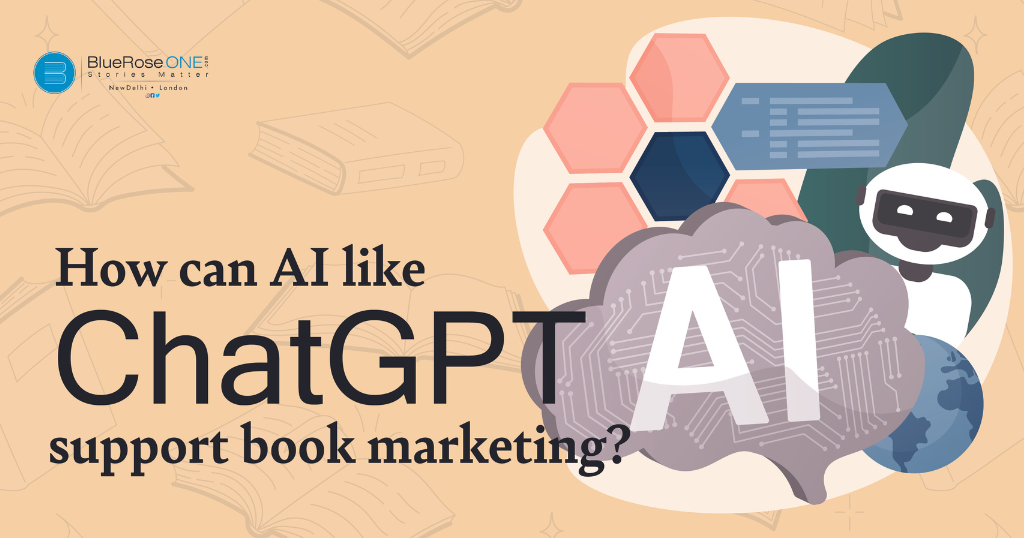
How can use ChatGPT & other AI systems to Assist you with Book Marketing
The landscape of book marketing has evolved significantly in the digital age, and the integration of AI technology has emerged as a powerful tool for authors and publishers. Among these technologies, ChatGPT stands out as a versatile and impactful AI model that revolutionises various aspects of book marketing. Section 1: Personalised Audience Engagement Tailored Recommendations: ChatGPT’s capacity to analyse vast amounts of data enables it to discern intricate patterns in reader behaviour, preferences, and demographics. By understanding the nuances of individual interests and reading habits, it excels at offering personalised book recommendations. Imagine a reader interacting with an AI-powered chatbot on a book retailer’s website. As the reader explores various genres and authors, ChatGPT processes this information in real-time. It analyses the genres the reader shows interest in, the authors they prefer, and even their interaction patterns on the site. Leveraging this data, ChatGPT can suggest highly tailored book recommendations. For instance, if the reader has shown a penchant for psychological thrillers and has previously engaged with works by a specific author, ChatGPT can intelligently recommend books from similar authors or within the same genre. This level of personalisation enhances the chances of the reader discovering new books that align closely with their tastes, thereby increasing engagement and potential sales. Interactive Experiences: ChatGPT’s capabilities extend beyond mere recommendations; it can also generate interactive experiences that enrich the reader’s engagement with authors and their works. These experiences include virtual book readings, quizzes, or personalised storytelling sessions. Let’s consider a scenario where an author uses ChatGPT to conduct virtual book readings. Instead of traditional in-person events, the author hosts a live reading session on social media or a dedicated platform. With ChatGPT’s assistance, the author can engage directly with the audience, allowing them to ask questions, share thoughts, or even participate in the storytelling process. ChatGPT assists by generating dynamic, conversational content based on audience input. For instance, during a storytelling session, if the audience suggests a particular plot twist or a character name, ChatGPT can seamlessly incorporate these suggestions into the ongoing narrative, creating an interactive and personalised experience for the audience. Similarly, authors can leverage ChatGPT to design quizzes or interactive stories related to their books. This fosters a deeper connection between the author’s work and the audience. By tailoring content based on the audience’s responses, ChatGPT ensures that each interaction feels unique and engaging. In essence, ChatGPT’s ability to create personalised and interactive experiences transcends traditional marketing approaches. It enables authors to forge stronger connections with their audience, turning passive readers into active participants in the literary experience. This, in turn, cultivates a loyal fan base and boosts the visibility and appeal of an author’s work in the highly competitive book market. Section 2: Content Creation and Optimisation: AI-Generated Content: ChatGPT’s ability to comprehend language nuances and generate coherent text makes it a valuable tool for crafting various marketing materials, including book blurbs, press releases, and social media posts. Consider an author preparing to launch a new book. With ChatGPT’s assistance, they can create compelling book blurbs tailored for different audiences. By inputting key information about the book—such as its genre, themes, and unique selling points—ChatGPT can generate multiple versions of concise and engaging blurbs. For example, it can craft a blurb that appeals to mystery enthusiasts by emphasising the suspense elements, while another blurb could focus on the book’s emotional depth to attract a different segment of readers. Press releases, crucial for garnering media attention, can also benefit from ChatGPT’s capabilities. By providing details about the book launch, the author’s background, and notable aspects of the storyline, ChatGPT can assist in composing press releases that capture journalists’ interest and effectively convey the book’s significance. Moreover, ChatGPT can aid in crafting social media posts that resonate with diverse audiences. For instance, it can generate engaging tweets, Facebook updates, or Instagram captions tailored to specific platforms and demographics. By understanding the tone, language style, and preferences of various social media users, ChatGPT ensures that the content aligns with the expectations of each platform’s audience. SEO and Metadata Enhancement: Optimising book metadata and refining descriptions are crucial for improving a book’s visibility online. ChatGPT’s capabilities extend to suggesting keywords, refining descriptions, and enhancing metadata to boost a book’s discoverability across search engines and online platforms. Let’s consider an author seeking to enhance their book’s online presence. By providing ChatGPT with the book’s title, genre, and a brief summary, the AI can suggest relevant keywords that potential readers might use in search queries. Incorporating these keywords into the book’s metadata, descriptions, and promotional materials can significantly enhance its visibility on search engine results pages (SERPs) and online bookstores. Furthermore, ChatGPT can assist in refining book descriptions to maximise their impact. By analysing existing descriptions or summaries and suggesting improvements, such as clearer language, more compelling hooks, or formatting enhancements, ChatGPT ensures that the book’s description is captivating and effectively communicates its essence to potential readers. Section 3: Data-Driven Insights and Analytics: Audience Analysis: ChatGPT’s prowess in analysing reader behaviour and preferences is instrumental in understanding audience dynamics. Through its ability to process and interpret vast amounts of data, it can derive insights from reader interactions, reviews, and engagement patterns across various platforms. For instance, consider an author seeking to promote a mystery thriller. ChatGPT can analyse reader interactions on social media, book forums, and even reviews of similar titles to identify specific preferences within the mystery genre. It can be discerned whether readers are inclined towards classic whodunits, psychological thrillers, or crime procedurals. This insight enables authors and publishers to tailor marketing strategies, including crafting compelling book descriptions, designing targeted campaigns, or even selecting the most appealing cover art that resonates with the identified audience preferences. Moreover, ChatGPT’s analytics can help identify niche segments within broader genres. For example, it might detect a rising interest in mystery thrillers set in specific locations or featuring unique protagonists. Armed with this information, authors can create content tailored to these niche preferences, thereby enhancing…
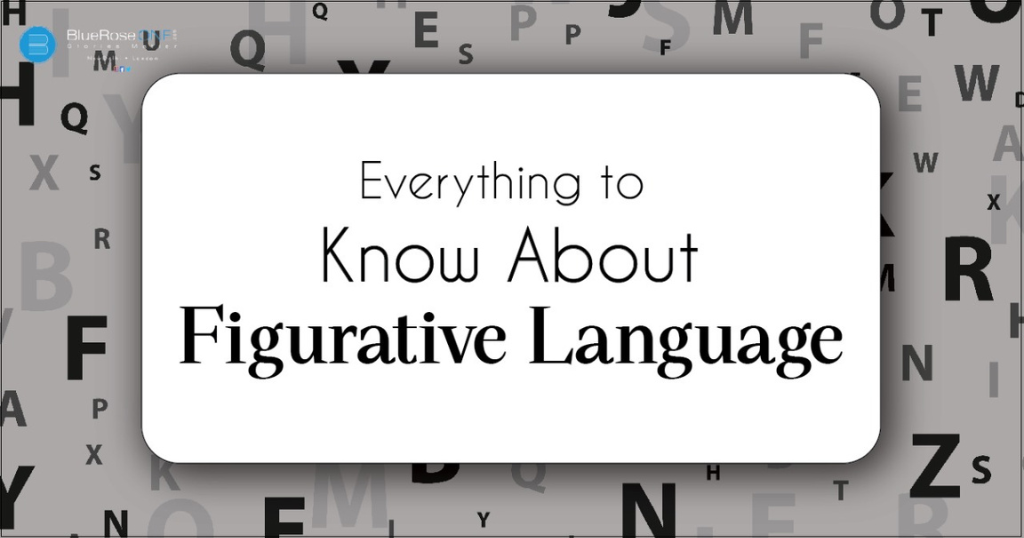
What are Figurative Language Examples: Everything to Know about Figurative Language
Figurative language serves as a powerful tool in the realm of communication, adding depth, vividness, and nuance to our expressions. In this comprehensive exploration, we delve into the intricacies of figurative language, providing a thorough understanding along with a plethora of examples to illuminate its various forms. Read: How Much Should My Book Cost? 7 Tips for How to Price Your Book. Introduction to Figurative Language: Figurative language, often referred to as a figure of speech, transforms language into an artistic tapestry, going beyond the mere literal interpretation of words. It involves the skillful application of various techniques to convey ideas, emotions, and concepts in a more imaginative and nuanced manner. By employing these linguistic devices, writers and speakers can elevate their communication, creating a richer and more resonant experience for their audience. You may also like: The Rise of Shakti by Megha Shakti: Book Review Understanding Figurative Language: Figurative language operates at the intersection of language and imagination. Its essence lies in transcending the ordinary, offering a creative means to communicate thoughts, emotions, and experiences. Unlike literal language, which straightforwardly conveys facts, figurative language takes a more indirect route. It involves techniques like similes, metaphors, personification, hyperbole, and more. These tools serve as linguistic brushstrokes, painting vivid pictures and evoking emotions that go beyond the surface meaning of words. Similes: A Comparative CanvasSimiles are linguistic gems that enrich our language by drawing comparisons between two disparate elements using the words “like” or “as.” Consider the phrase “as brave as a lion.” Here, the simile paints a vivid picture of someone’s courage by likening it to the bravery often associated with a lion. Similes serve as a bridge between the familiar and the unfamiliar, making abstract concepts more relatable. Explore a variety of simile examples to appreciate the diverse and imaginative ways in which they enhance our communication. Metaphors: Unveiling Deeper MeaningsMetaphors elevate language by equating one thing to another without the use of explicit comparative terms like “like” or “as.” “Time is a Thief” is a poignant metaphor that captures the essence of time slipping away irreversibly. Metaphors serve as powerful tools for conveying complex ideas, allowing readers to grasp nuanced concepts through familiar associations. Delve into a series of illustrative metaphoric examples to uncover the richness and depth they bring to our expressions. Personification: Breathing Life into Inanimate ObjectPersonification involves attributing human qualities to non-human entities and infusing them with life and personality. In the phrase “the wind whispered through the trees,” the wind is personified, gaining the human ability to whisper. This technique fosters a deeper connection between the reader and the elements of nature. Explore a range of personification examples to understand how this figurative language form breathes life into the inanimate, making the world more vibrant and relatable. Hyperbole: Exaggeration for EmphasisHyperbole adds flair and emphasis to language through exaggerated statements that are not meant to be taken literally. When someone says, “I’ve told you a million times,” they aren’t stating a precise count but emphasising the frequency of their repetition. Hyperbole injects drama into expressions, amplifying the impact of the intended message. Immerse yourself in a collection of hyperbole examples to appreciate how this figurative language form enhances the art of communication. Idioms: Expressions Beyond Literal InterpretationIdioms are cultural expressions whose meanings cannot be deduced from the individual words used. “Kick the bucket,” for instance, doesn’t involve literally kicking a bucket but refers to someone passing away. Idioms add colour and depth to language, often rooted in historical or societal contexts. Explore a myriad of idiom examples to grasp the diversity and cultural richness embedded in these figurative expressions. Onomatopoeia: Echoes of Sound in LanguageOnomatopoeia involves words that mimic the sounds they represent, creating a sensory experience within language. Words like “buzz,” “hiss,” or “clang” evoke auditory sensations, adding a layer of vividness to written and spoken communication. Immerse yourself in the world of onomatopoeia through a collection of expressive examples that showcase how this figurative language form captures the essence of sound. Symbolism: Layers of Meaning in ObjectsSymbolism imparts deeper meanings to objects, actions, or concepts, often representing something beyond their literal interpretation. For example, a red rose can symbolise love, while a winding road may represent life’s journey. Symbolism adds layers of significance to language, allowing writers to convey profound ideas through carefully chosen symbols. Explore a diverse array of symbolism examples to unravel the richness and depth encapsulated in this figurative language form. You may also like: What is Plot Structure? Definition with Examples How to Master the Art of Figurative Language in Your Writing Figurative language is the secret weapon in a writer’s arsenal, capable of transforming ordinary prose into a tapestry of vivid imagery and evocative expression. Whether you’re crafting fiction, poetry, or even non-fiction, understanding and adeptly employing figurative language can elevate your writing to new heights. Here’s a guide on how to infuse your work with the power of metaphors, similes, personification, and more. Identify Your Message: Before delving into figurative language, identify the core message or emotion you want to convey. Whether it’s love, loss, joy, or despair, having a clear understanding of your theme lays the foundation for effective use of figurative language. Choose the Right Device: Figurative language encompasses various devices, each serving a unique purpose. Similes and metaphors draw comparisons; personification attributes human qualities to non-human entities; and hyperbole exaggerates for effect. Select the device that aligns with your intended impact. Similes and Metaphors: Similes and metaphors breathe life into descriptions. Similes use “like” or “as” to compare two seemingly unrelated things. For instance, “Her laughter was like a melody.” Metaphors, on the other hand, establish a direct equivalence, such as “Time is a thief.” Experiment with these devices to add depth and resonance to your writing. Personification: To add a touch of the human to the non-human, employ personification. The wind can “whisper secrets,” and the flowers can “dance in the breeze.” This anthropomorphic approach fosters a connection between the reader and the elements…
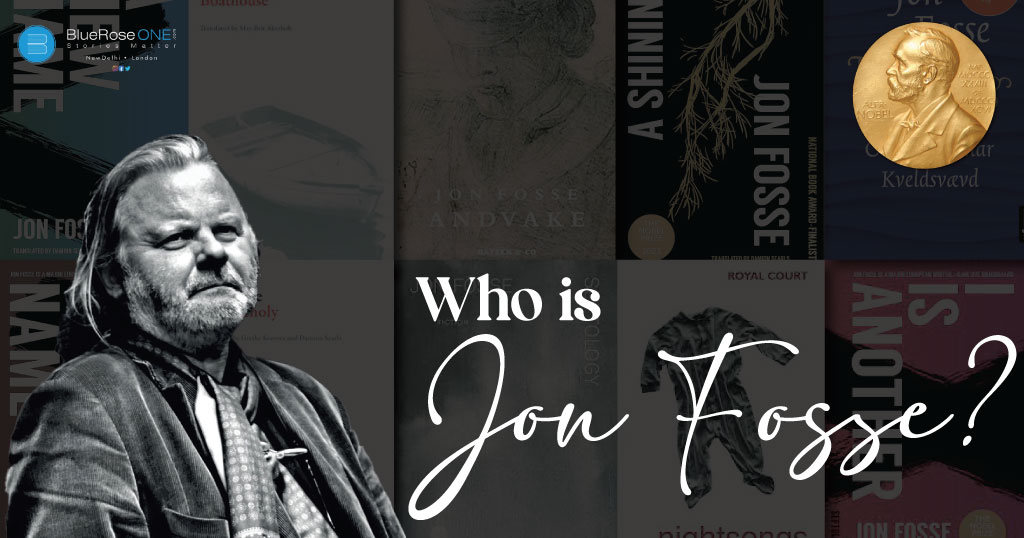
Who is Jon Fosse? Things to know about Nobel Prize Winner 2023
In the realm of contemporary literature, few names stand as tall as Jon Fosse, a Norwegian playwright and novelist whose contributions to the world of letters have earned him the prestigious Nobel Prize in Literature for the year 2023. This blog post aims to delve into the life, works, and impact of Jon Fosse, unravelling the layers of his literary brilliance that culminated in this significant recognition. Early life and background: Jon Fosse, born on September 29, 1959, in Haugesund, Norway, emerged from the picturesque backdrop of a small coastal town, an environment that would profoundly shape his literary journey. The essence of Fosse’s early life experiences and the distinctive Norwegian landscape became integral elements of his literary canvas. Growing up in this close-knit coastal community, Fosse absorbed the cultural nuances and unique heritage of Norway, laying the groundwork for his future artistic endeavors. The small-town setting, with its intimate connections and communal bonds, left an indelible mark on Fosse’s worldview and thematic explorations. Read: How to Overcome Writer’s Block: 10 Proven Ways to Unlock Your Creativity The coastal environment, with its rugged landscapes and maritime influences, seeped into the fabric of Fosse’s imagination, offering a rich palette for him to draw upon in his writings. The essence of his Norwegian upbringing permeates his works, contributing to their authenticity and cultural depth. Fosse’s early life thus serves as a foundational pillar, grounding his literary creations in the distinct textures of his homeland and providing readers with a glimpse into the cultural richness that underpins his acclaimed body of work. Literary Style and Themes: Jon Fosse’s literary style stands as a testament to the power of simplicity and the impact it can have on exploring profound aspects of the human condition. His writing is characterised by a spareness that eschews unnecessary embellishments, opting instead for a minimalist approach that allows the core emotions and thoughts to shine through. This stripped-down style is a deliberate choice, emphasising the essence of his narratives and creating a canvas where readers can engage with the subtleties of the human experience. The minimalist approach in Fosse’s writing serves as a vessel for a deep exploration of existential questions, human relationships, and the intricacies of the mind. By paring down his prose, Fosse creates a space where the reader can immerse themselves in the underlying complexities of his narratives. The simplicity of his language acts as a conduit, drawing readers into the depths of his characters’ emotions and the philosophical inquiries that permeate his works. One of the central themes that consistently reverberates throughout Fosse’s body of work is the universal yet deeply personal exploration of loneliness, mortality, and the search for meaning. These themes are the emotional bedrock upon which his narratives unfold. Fosse’s characters often grapple with the isolation of existence, confront the inevitability of mortality, and engage in a quest for meaning that transcends cultural boundaries. Loneliness, as portrayed by Fosse, is not merely a physical state but a profound emotional and existential condition. His characters navigate the vast landscapes of their inner selves, seeking connections that extend beyond the surface level. Fosse’s spare prose allows readers to feel the weight of this loneliness, making it a palpable and relatable aspect of the human experience. Read: A Complete Guide on How to Make Your Book an International Bestseller and Sell Globally. Mortality, another recurring motif, is approached with a contemplative lens. Fosse’s characters confront the transience of life, prompting readers to reflect on their own mortality and the fleeting nature of existence. This theme adds a layer of introspection to his works, inviting readers to ponder the significance of their own lives in the face of impermanence. The search for meaning, perhaps the most existential of themes, is woven intricately into the fabric of Fosse’s narratives. His characters embark on introspective journeys, grappling with the purpose of their lives and the meaning they derive from their experiences. Fosse’s minimalist style allows these explorations to unfold gradually, encouraging readers to engage in a contemplative dialogue with the text. In essence, Jon Fosse’s literary style, marked by its spareness, acts as a conduit for the exploration of universal themes that resonate deeply on a personal level. His minimalist approach creates a literary space where readers can navigate the complexities of loneliness, mortality, and the search for meaning, making Fosse’s works a poignant and introspective journey into the human soul. Notable Works: Fosse’s literary repertoire is extensive and diverse, encompassing plays, novels, essays, and poetry. Some of his most acclaimed works include: In each of these notable works, Jon Fosse exhibits a mastery of storytelling, a keen understanding of human psychology, and an unwavering commitment to exploring the profound complexities of life through literature. International Recognition: Jon Fosse’s literary acclaim extends well beyond the borders of Norway. His works have been translated into numerous languages, garnering widespread recognition and appreciation on the international stage. The translation of Fosse’s novels, plays, and poetry has allowed readers from diverse cultural backgrounds to access and engage with his unique literary voice. Fosse’s ability to capture universal themes and emotions transcends linguistic and cultural barriers, resonating with readers worldwide. The Nobel Prize in Literature for 2023 further solidifies Fosse’s global standing. This prestigious accolade not only acknowledges his contribution to Norwegian literature but also positions him as a literary giant with a profound impact on a worldwide scale. The international recognition of Fosse’s work reflects the universality of his themes and the depth of his insights into the human experience, making him a figure whose influence extends far beyond the confines of his homeland. Influence on Contemporary Literature: Jon Fosse’s minimalist style and his profound exploration of human nature have significantly influenced contemporary literature. Writers and critics alike have acknowledged the subtlety and depth with which Fosse navigates the complexities of the human psyche. His impact is evident in the works of authors who have been inspired by his thematic richness and narrative precision. Fosse’s minimalist approach, characterised by spare…
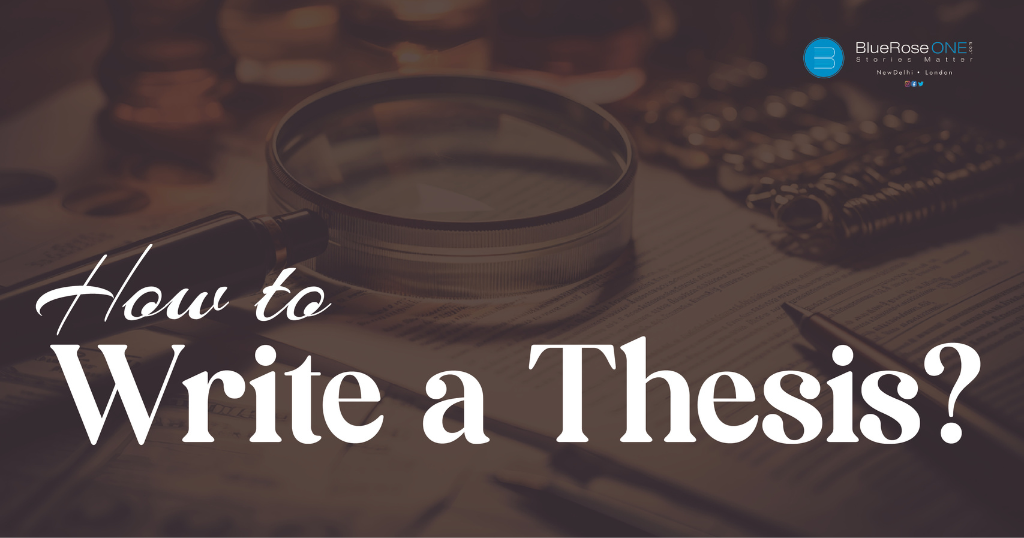
How to Write a Thesis: A Comprehensive Guide
Writing a thesis is a monumental task that many students and researchers face in their academic journey. It’s a rite of passage that demands dedication, research, and well-structured writing. Whether you’re a graduate student working on your master’s thesis or a doctoral candidate preparing a dissertation, this comprehensive guide will take you through the essential steps and provide you with tricks to ensure your thesis is a success. Section 1: Getting Started Starting your thesis can be a daunting but crucial step in your academic journey. Here are some key steps to kickstart your thesis-writing process: Choose your topic: Selecting a topic is the first and most vital step in writing a thesis. Opt for a subject that genuinely piques your interest. Your passion for the topic will provide the motivation and resilience needed throughout the often lengthy and demanding research and writing process. Research extensively: Once you’ve chosen your topic, dive into existing literature to gain a thorough understanding of it. This step is critical for identifying gaps or areas where your thesis can make a valuable contribution. A comprehensive understanding of the existing body of work is essential for meaningful research. Develop a research question: Formulating a clear and specific research question is the cornerstone of your thesis. This question will guide your research and provide focus. It should be well-defined, relevant, and designed to address an issue or explore a particular aspect of your chosen topic. Create a thesis timeline: Establishing a timeline with defined milestones is crucial for effective thesis planning. This timeline should encompass all phases of your thesis, from initial research to final writing and editing. Setting achievable goals and deadlines will keep you on track and help you manage your time effectively. Select your advisor: Choosing the right advisor or mentor is a pivotal decision. Your advisor will provide guidance, support, and valuable feedback throughout your thesis journey. Look for someone with expertise in your field with whom you can effectively collaborate. You may also like: Fatal Flaw: Definition, Types, Examples and More Crafting a good thesis is a meticulous process that necessitates careful planning and execution. Here are some tips to help you write a compelling and well-structured thesis: Clear and concise statement: Your thesis statement serves as the foundation of your work. It should be a clear, concise, and arguable declaration of your research’s central point. Every element of your thesis should relate to or support this statement, making it a vital aspect of your work. Organised structure: Structuring your thesis with clear chapters or sections, each focused on a specific aspect of your research, is essential. Use well-defined headings and subheadings for clarity and ease of navigation, helping your reader follow your arguments and findings. Literature review: A comprehensive literature review is crucial to establishing the context for your research. It demonstrates your awareness of existing scholarship and helps identify gaps in the field where your work can contribute. Your literature review should be well-structured and synthesise key findings from relevant sources. Original contribution: Highlight how your research makes an original and meaningful contribution to your field. Emphasise the novel aspects of your work, whether it’s new data, fresh insights, or innovative methodologies. Clearly articulating your research’s unique value is essential. Methods and data: Describe your research methods and data collection processes thoroughly. Ensure that your methods are well-suited to address your research question. Accurate data presentation is critical, as it forms the basis for your analysis and findings. Analysis and interpretation: In this section, delve into a comprehensive analysis of your data. Discuss the implications of your findings and how they relate to your research question and thesis statement. Your analysis should be insightful and clearly presented. Citations and references: Properly cite all sources you use in your thesis and create a well-structured reference list. Adhering to citation styles consistently is vital to maintaining academic integrity. Proofread and edit: Before finalising your thesis, dedicate time to meticulous proofreading. Eliminate grammatical errors and typos, and ensure clarity in your writing. Consider engaging a professional editor for a comprehensive review to enhance the overall quality of your work. Section 2: Crafting Your Thesis What are the three parts of a thesis statement? A thesis statement typically consists of three parts: Introduction: This section provides an overview of the topic and presents the research question or problem. Body: The body of the thesis contains the main arguments, evidence, and analysis that support the thesis statement. Conclusion: The conclusion summarises the key findings, their implications, and their relevance to the research question. You may also read: The 7 Best Fantasy Book Series of All Time What is the first sentence of a thesis? The first sentence of your thesis is often an introductory sentence that sets the stage for the entire work. It should introduce the topic, provide some context, and lead into your thesis statement. A compelling first sentence can grab your reader’s attention and make them eager to explore your work further. What is a good sentence starter for a thesis? A good sentence starter for a thesis can vary depending on your field and the nature of your research. However, some common sentence starters include: “This thesis examines…” “The purpose of this study is to…” “In this research, we investigate…” “Our study aims to understand…” “The central question addressed in this thesis is…” Choose a sentence starter that aligns with your research and provides a clear introduction to your topic. You may also like: What is Cozy Mystery? A Beginner’s Complete Guide How do you start an introduction for a thesis statement? Your thesis introduction should engage your reader and provide a clear framework for your research. Here’s how to start an effective introduction: Hook the Reader: Begin with a compelling anecdote, a surprising fact, a relevant quote, or a thought-provoking question to grab your reader’s attention. Provide Context: Introduce the broader context of your research area and highlight the significance of your topic. State the Problem or Research Question: Clearly present the problem…
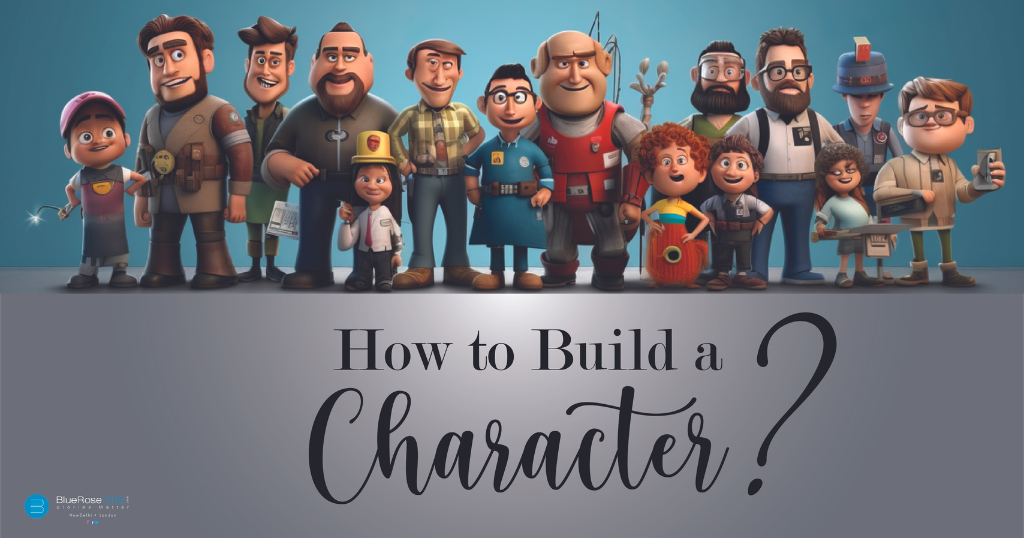
How to do Character Development: Bringing Your Characters to Life
In a world where reality is fictionized to make up for the lack of resonance, characters are made to be our comfort zones. In a book, a character is a fictional person, being, or entity created by the author to play a role within the story. Characters are central to the narrative and are typically individuals with their own personalities, backgrounds, motivations, and complexities. They can be protagonists, antagonists, supporting characters, or even minor characters, each serving a specific function in advancing the plot, conveying themes, or providing depth and context to the story. A well-developed character is not just a name and a physical description; it is a multi-dimensional entity with emotions, desires, flaws, and a unique voice. Readers or viewers engage with these characters, forming connections and emotional attachments as they follow the characters’ journeys and growth throughout the book. Read: How to Beautify Your Book’s Back Cover Design: A Step-by-Step Guide The portrayal and development of characters play a pivotal role in making a story relatable and compelling to the audience. There are many characters who have become our favourites, whether they are the main leads or supporting characters. But why and how does that happen? Why do we connect with them? Why do we feel what they feel? It is pretty simple. Because they are written so well and enigmatically, they draw us towards them. In this blog post, we will be going in depth as writers and readers as to how a character is built to be a fan’s favourite. Protagonist: Zero until the writers make them heroes. The protagonist is the central character around whom the story revolves. The protagonist is typically the character whose journey, challenges, and growth the narrative primarily focuses on. They are often the characters with whom the reader or audience is meant to identify or empathize. The protagonist is at the forefront of the story’s action and is usually involved in the major conflicts or dilemmas that drive the plot forward. The role of the protagonist can vary from one story to another. In some cases, the protagonist is a hero or a character with admirable qualities, while in others, the protagonist may be more complex, with both strengths and flaws. Protagonists can come in various forms, including heroes, anti-heroes, and everyday individuals. Their character development and their journey through the story are central to the overall narrative structure. Developing a protagonist’s character to be realistic and relatable is a cornerstone of crafting a compelling narrative. To achieve this, it’s imperative to create a character with depth and complexity. A one-dimensional, flawless protagonist can alienate readers, as they may struggle to identify with such perfection. Instead, imbue your main character with a rich backstory that informs their present actions and motivations. Read: How to pick between Paperback, Hardcover, eBook – What’s best for you? Explore their strengths and weaknesses, ensuring that their flaws are as apparent as their virtues. These imperfections make characters more relatable and human. Clearly define your protagonist’s motivations and goals, as these desires are what drive the plot forward. The protagonist should undergo both internal and external conflicts, wrestle with moral dilemmas, and experience moments of self-doubt. Crafting a well-thought-out character arc is essential, showcasing their evolution throughout the story. By allowing your protagonist to grow and change in response to their experiences, you invite readers to join them on a journey of self-discovery and transformation. Infuse the character with a unique voice, use dialogue and interactions to reveal their personality, and remember to “show, don’t tell.” Ultimately, relatability comes from the protagonist’s humanity, vulnerabilities, and the authenticity of their struggles. It’s this relatability that forges a strong connection between the character and the reader, ensuring their immersion in the narrative. Antagonist: Readers’ Guilty Pleasure and Writers’ Dark Side The antagonist is a character or force that opposes the protagonist, creating conflict and tension within the story. The antagonist serves as the primary source of opposition and stands in the way of the protagonist’s goals or desires. They are often responsible for creating obstacles, challenges, and dilemmas that the protagonist must overcome, driving the plot forward and providing a central source of conflict. Antagonists come in various forms and can be complex characters with their own motivations, or they can be more one-dimensional figures whose primary purpose is to act as an obstacle to the protagonist’s journey. Some antagonists may be villains, but not all antagonists are necessarily evil or malevolent; they simply have goals or interests that conflict with those of the protagonist. The role of the antagonist is essential in shaping the narrative and helping to reveal the strengths and weaknesses of the protagonist. The tension and conflict generated by the antagonist are central to the story’s progression and often lead to character development and growth in the protagonist. Developing a realistic and relatable antagonist is a pivotal aspect of crafting a dynamic and engaging narrative. To achieve this, it is essential to delve deep into the character’s psyche. Start by defining their motivations and goals clearly, providing insight into what drives them. Avoid the clichéd, one-dimensional villain and opt for complexity, crafting a backstory that elucidates their evolution and choices. Develop a moral code that, while differing from the protagonist’s, remains consistent within their worldview, thus presenting moral dilemmas. Like the hero, the antagonist should possess flaws and vulnerabilities, rendering them human and relatable. It’s often these imperfections that generate empathy. Incorporate moments that allow readers to connect with the antagonist, showcasing their struggles and vulnerabilities. Consider granting the antagonist a character arc, offering opportunities for change and growth, and exploring their relationships with other characters. Reveal a range of emotions, from doubt to regret, and imbue them with humanising qualities, be they a sense of humour or moments of genuine care. In dialogue and monologues, provide insights into their mindset, always adhering to the “show, don’t tell” principle. Ultimately, creating an antagonist with depth and relatability adds layers to your story, making it more engaging and thought-provoking…

